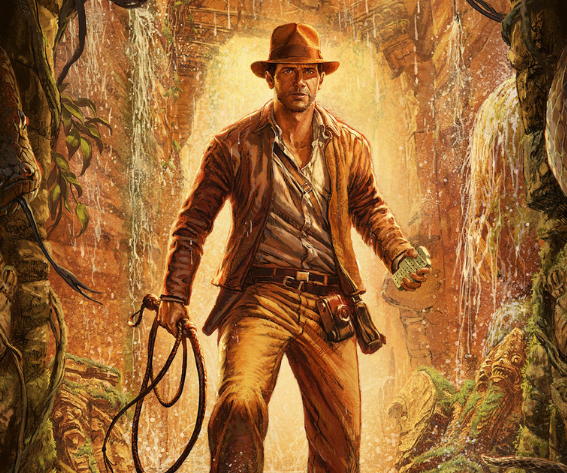Storytelling in entertainment has always adapted to reflect shifts in popular culture. Every medium—novels, comics, video games, and even real-world events—has influenced film, adding layers to plotlines and expanding narratives into multiple seasons or sequels. However, as we venture further into the digital age, one of the most intriguing developments is the growing influence of online games on movies.
Today, online games are shaping film narratives, visual styles, and even audience expectations, creating a unique synergy between these two mediums. This crossover not only enriches the cinematic experience but also introduces new storytelling possibilities that appeal to fans of both interactive and traditional media.
Why Online Games Could Shape the Future of Film
All these puzzles aside, online games still have a bright future ahead as the cinemas of inspiration. As technology and storytelling methods advance, nearness to the gaming experience on a big screen keeps on being increasingly capable. Advancements in CGI give filmmakers the ability to bring realistic representations of game worlds. Avatar has already demonstrated CGI capabilities beyond most game adaptations’ means, and future online game adaptations could top even that with near-photorealistic worlds.
The Appeal of Shared Universes
The concept of shared universes has become a powerful storytelling tool, inviting audiences to invest deeply in an interconnected world where characters and events overlap, creating a tapestry of interconnected stories. This appeal has been amplified by franchises like the Marvel Cinematic Universe, where each film contributes to a larger narrative, enriching the overall experience for fans. Similarly, games like Fortnite and Minecraft are pioneering their versions of converging universes, with crossovers and collaborations that bring in characters, items, and narratives from a variety of genres and franchises.
Audience Engagement
One of the great features of online games is that their audiences are incredibly engaged. So by making films based on the games they are able to reach these targeted audiences. Also, there are still some exceptional online games that have a good audience engagement, and if a movie is made based on those games, then it will be a hit.
Innovative Storytelling Techniques
Online games have also stretched the limits of storytelling, ever-affording branching paths and moral ambiguities, as well as richer characters. Movies based on these types of games could borrow the storytelling styles, such as nonlinear storytelling or theatre-based interactive components. Online games are a gold mine for storytelling, but there also lies the challenge of adapting them into film. Here are some of the biggest hurdles filmmakers have to clear when it comes to adapting games for the big screen:
Maintaining Fan Loyalty
Online games often cultivate a deeply invested fan base that values adherence to the original source material. These fans develop strong attachments to specific characters, narratives, and even the world-building details. Any divergence from these elements can feel like a betrayal, sparking backlash and heated discussions on forums, social media, and review sites. Game-to-movie adaptations often struggle to balance the expectations of these dedicated fans with the creative liberties filmmakers want to take to make the story more suitable for a different medium. Finding this balance requires not only sensitivity to fan concerns but also a thorough understanding of the aspects of the game that fans hold dear, which can be tricky to replicate on the big screen.
Interactivity vs. Passive Viewing
Games provide a unique experience where players are active participants, able to shape outcomes and experience the world in a personal, immersive way. In contrast, films are inherently passive, with the audience confined to the director’s vision without any room for personal agency. This shift from interactive gameplay to passive viewing risks losing the engaging qualities that make games memorable. Elements such as decision-making, exploration, and adaptive storytelling—hallmarks of many popular games—are challenging to capture on film. As a result, beloved characters or storylines may feel flat or one-dimensional, potentially alienating audiences who crave the same depth and control they had in the game.
Depth and Complexity
Technical Constraints
Games benefit from the freedom of digital spaces, where expansive worlds, intricate details, and imaginative visuals can be created without the physical limitations of the real world. Developers can render entire universes that defy physics, creating sprawling landscapes, fantastical creatures, and dynamic effects that would be impractical or impossible to recreate outside of a game engine. However, adapting these vast digital realms into live-action or CGI-dominated films presents a unique set of challenges.
Producing a movie with the same level of visual fidelity and immersion requires extensive resources, from advanced CGI technology to highly skilled VFX teams, which can drive up costs dramatically. Budgets are often restricted, leading to compromises in design, scenery, and effects quality. Even the most advanced filmmaking techniques can struggle to match the boundless nature of video game worlds, potentially leading to a product that feels less immersive or visually stunning than the original. These limitations may leave game fans disappointed if the adaptation lacks the scope or attention to detail that made the game memorable, underlining how the technical constraints of film production can limit the full realization of a beloved virtual world.
Final Thoughts
Certainly, online games belong in the list of the most powerful digital-age media. By creating global communities and forging deep bonds with players, their complex narratives, characters, and immersive worlds have remained indispensable globally. These games have become hugely popular. Naturally, this will have an effect on other media including film. We hope that this guide has helped you.
Main photo credit: Youtube (Throneful)









Leave a reply